
Find out how much it costs to install crown molding by type and size. Use our expert guide to figure out how much crown molding you need, how much crown molding costs near you, and whether you need to hire a pro.
Indulgence has never felt more fashionable


Maximalist decor embodies the “more is more” philosophy.
Think bold colors, layered patterns, and ample accessories.
Take risks and get playful, with the goal of making the end result look cohesive.
You don’t have to be well-versed in the world of interior design to have heard of the minimalist design trend—the one in which simplicity is key and scarcity is even better—but perhaps you’re less familiar with its counterpart, maximalism. What is maximalism? Maximalism is the design style that encourages you to surround yourself with all the art and decor that brings you happiness, and it’s currently a front runner of the 2022 interior design trends. But even decorating to the “max” has its limits, so here we’ll break down exactly what maximalism means and how you can achieve it without creating chaos.

Maximalism is a design trend that operates on the belief that more is more. The concept driving this style is to incorporate bold colors, vibrant patterns, complex shapes, unexpected textures, and alternating tones in such a way that they’re layered upon one another strategically. Whether you achieve this through artwork, statement pieces, furniture, or art deco from your favorite era, maximalism boils down to one steadfast notion: fill your space with everything you love.
Maximalism has been around for decades, and much like other iconic fashion trends throughout history, it’s back in style after a long hiatus. Perhaps first hitting the scene in the Victorian era, when intricate, yet extravagant furnishings were coveted, maximalism has made reappearances more recently, such as in the 80’s, when wallpaper and heavy, decorated drapes were in their glory days. Nowadays, the “opulence” aspect of maximalist decor is less about monetary value and more about an abundance of playful creativity. The idea is to be busy, bold, and flamboyant with things you love that display your unique personality.
Though maximalism and minimalism are drastically different aesthetics, one certainly isn’t better than the other. Both of these styles derive from the concept of embracing and expressing what you love. In terms of interior design, minimalism is about simplicity and using basic decor elements, the value of free space and clean lines outweighing excessive items. Minimalist decor plays by the rules of organization, balance, and clutter-free styling.
Maximalism, on the other hand, has less restrictions. Since you’re decorating for comfort, you can take risks with mixing and matching elements. When it comes to space, there’s no objection to filling it. Even though maximalism is about more, it doesn’t always mean floor space—you can take advantage of the ceiling and walls.
According to Teri Simone, chief kitchen designer at Nieu Cabinet Doors, “Maximalism is the perfect opposite to the minimalist trend, encouraging people to be creative and explore their unique personal taste.”

Maximalism is all the rage right now. Despite minimalism becoming a viral trend over the past few years, as small homes started eclipsing the standard-sized ones and spring cleaning turned to extreme decluttering on social media, maximalism is currently pushing minimalism out of the spotlight.
This resurgence of a desire for maximalist interior designs may be due in part to the pandemic driving the population into their homes—one of the few places that allowed for any sense of control. Being confined by quarantine for the first time for many resulted in finding new ways to get creative, such as redecorating single rooms or entire homes to reflect the things that evoke joy and provide a sense of normalcy. Though minimalism is still a popular design choice, if your motto is “leave no empty spaces,” your maximalist time to shine is now.

The common misconception surrounding maximalism is that it implies a lot of stuff, but attaining the look isn’t as easy as covering every inch of your walls in a disorderly fashion. What comes as a surprise to many is that there is a method to decorating by way of maximalism, and it entails creating a cohesive look out of an abundance of materials. Below are a few of the key elements of maximalist decor:
Patterns
Shapes
Colors
Textures
Self-expression
Not sure if you can pull off the maximalist look in your space? Check out this compilation of 30 ideas so you can get started on transforming your home into a maximalist work of art.

It can be intimidating to embrace the maximalist style for the first time. The trick is to start with small things you can change quickly or economically, such as accent pillows on a sofa. These can instantly add a pop of color and liven up an otherwise boring space.

Have fun with juxtaposition by combining textures with patterns and furniture pieces you never imagined could coexist harmoniously. Leather and faux fur—why not?

Lighting, architecture, and function are a few of the plethora of elements to think about in terms of design. Certain room upgrades, such as hanging a large and lovely chandelier, may require professional light fixture installation near you to ensure it’s done safely.

A classic trick of maximalist decor is layering. Alternating patterns, colors, and accessories add an element of intrigue when you use nontraditional elements. For example, why not layer up rugs?
Maximalism can even be incorporated in the kitchen. Elevate the space by painting cabinets, shelves, and inside window frames, or by installing a bright kitchen island.

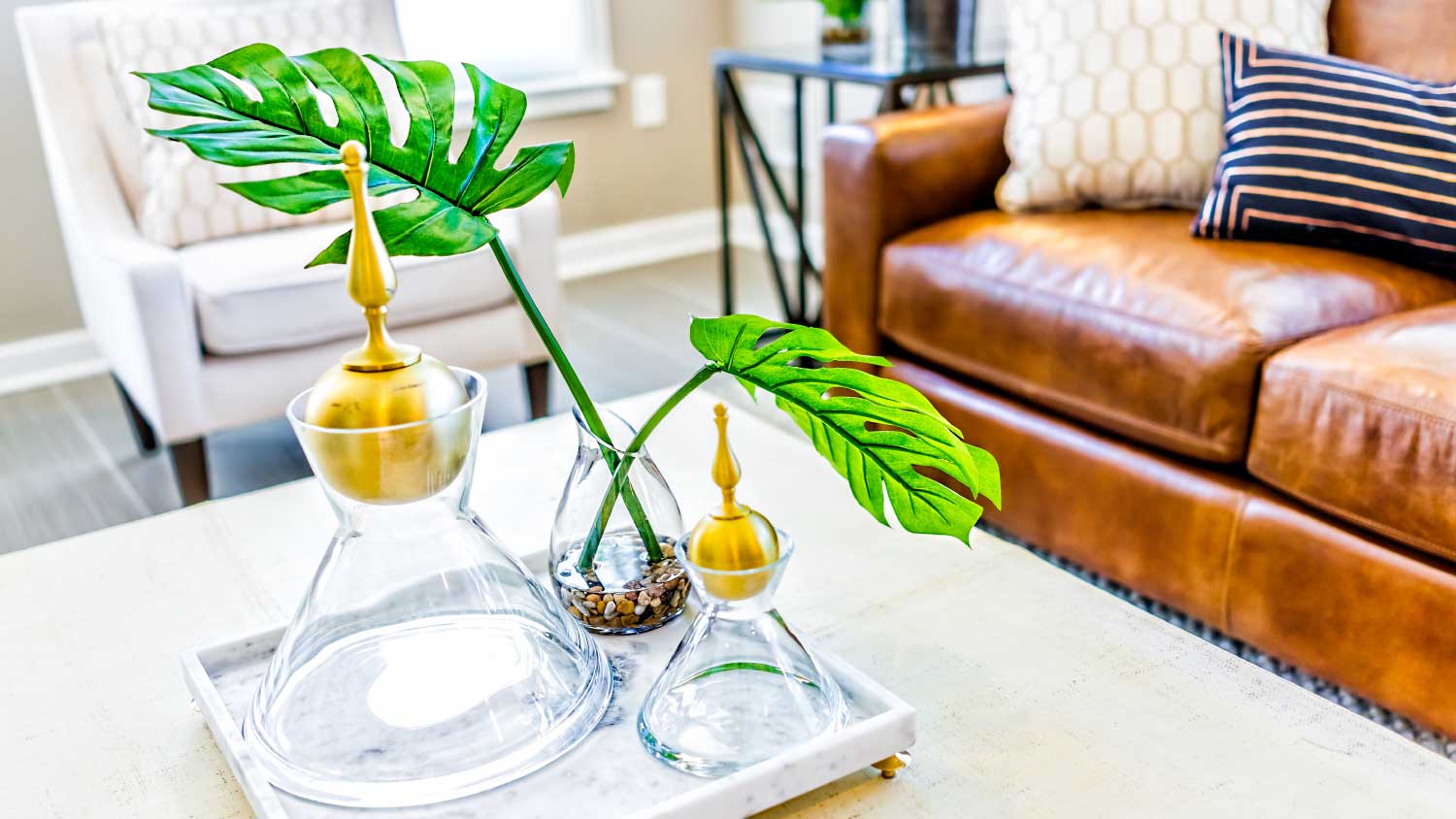
Arranging objects into groupings, or vignettes, can make a room “full of stuff” look polished and well-put-together. Accessories of various heights, like colorful vases and greenery, atop coffee tables and other flat surfaces can complement any space.

Surfaces like dressers and coffee tables are great places to display beloved collections, such as vintage book sets and figurines.

A plant parent’s dream, biophilic design is increasingly popular among maximalists. Create an abundance of greenery with botanical wallpapers, large houseplants, and natural elements. Incorporating nature can create a calming ambiance and help boost creativity.

Metallic accessories can add elegance and shine to a room. Combine cool tones such as silver and gunmetal with warm tones like copper and brass to create a unique look.
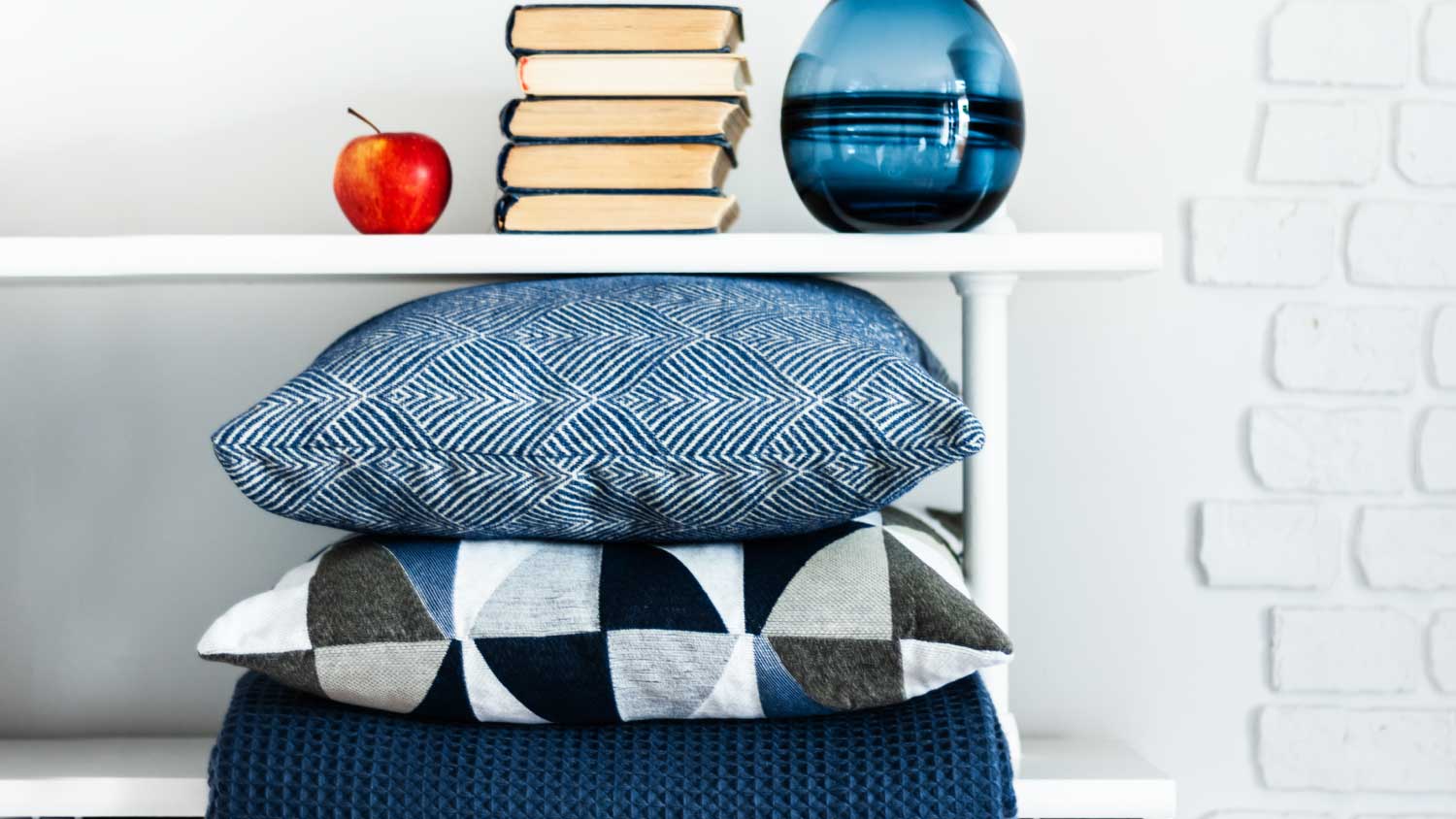
Abstract pillowcase designs and uniquely shaped mirrors are fun ways to incorporate various shapes. You can even hire a local carpenter to custom-build intricate wall shelves.
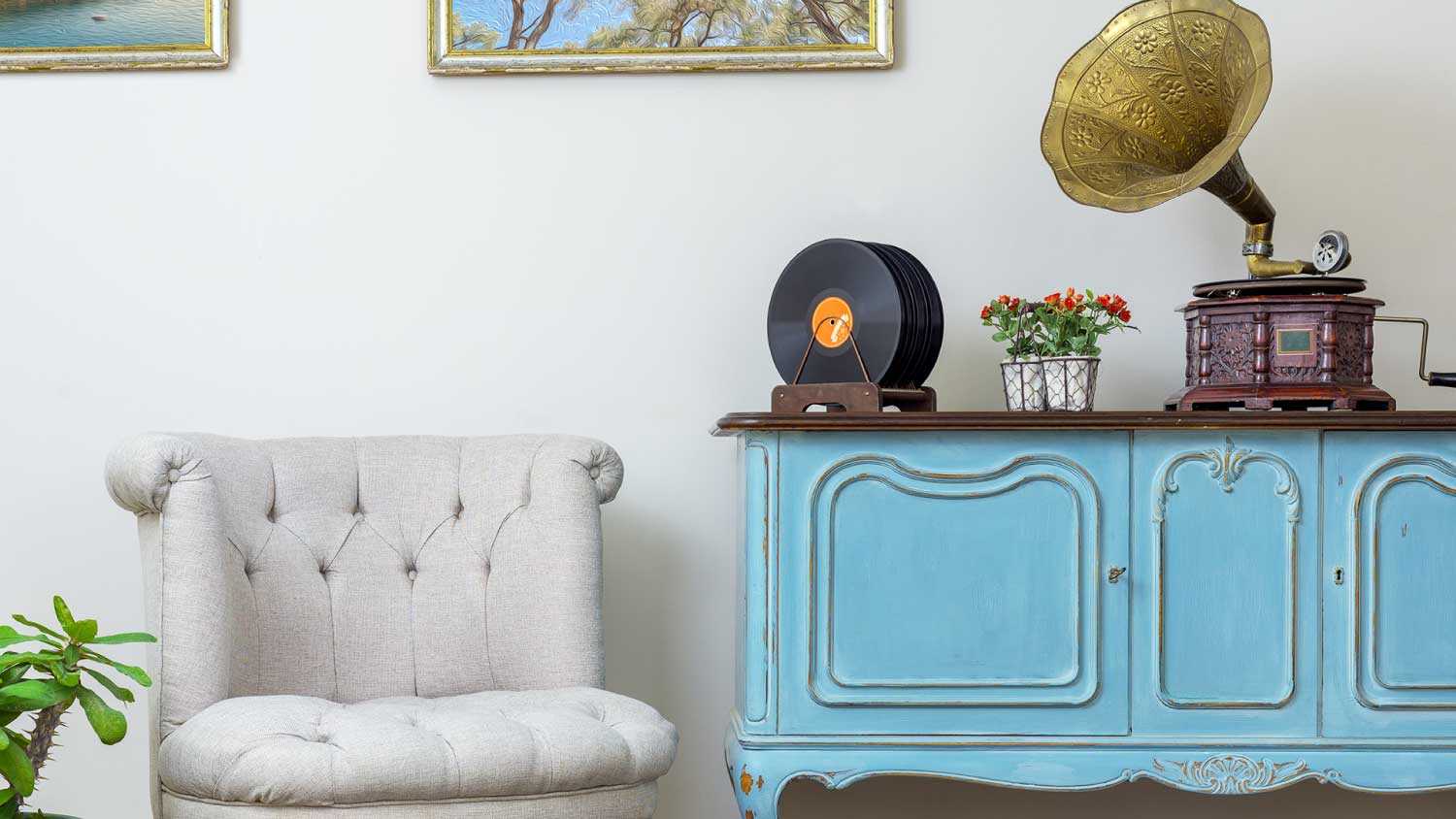
Maximalism encourages creativity by way of vintage items. From antique art found in a thrift store to furniture heirlooms, these pieces typically boast bold colors and abstract shapes, making them welcome additions to a maximalist room.

Find intriguing items that spark the curiosity of visitors. Is it a lion head sculpture or a giant pop art portrait? Think about pieces that could initiate conversation and go for it.
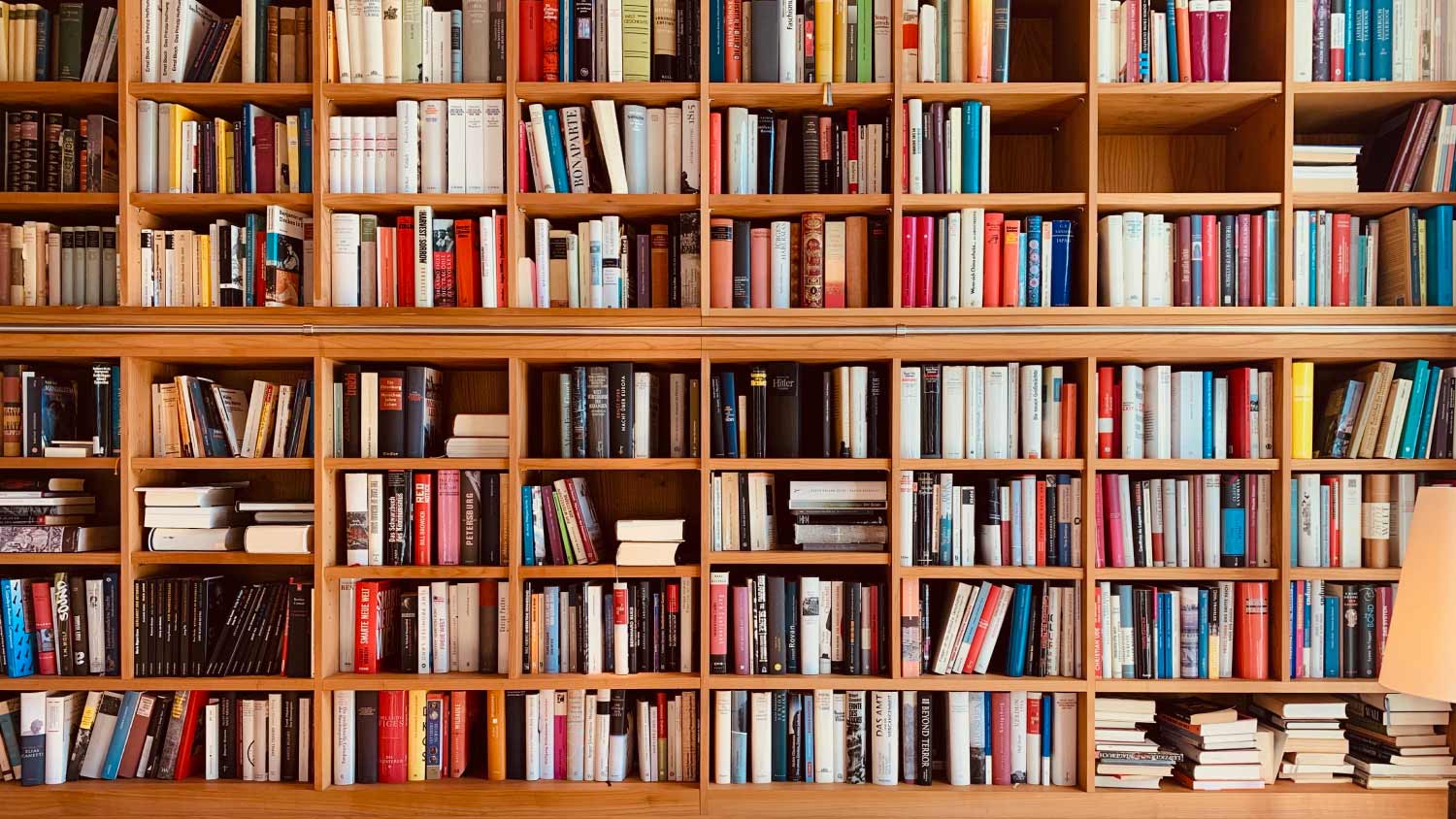
Bibliophiles can easily embrace maximalism through their collection of books. Displaying mismatched sized books of different colored bindings on wall-to-wall shelves or a built-in bookcase can add personality and a bit of coziness to a room.
White walls are a huge blank canvas for maximalists. Using wallpaper designs, such as patterned florals or abstract murals, can instantly add cheerfulness and character to a space.


Opt for oversized items that play with proportions, such as a feature chair or large mounted mirror.
In maximalist decor, ceilings are the “fifth wall.” Jazz up a bedroom by painting the ceiling a rich jewel tone or adding a stunning wallpaper mural.
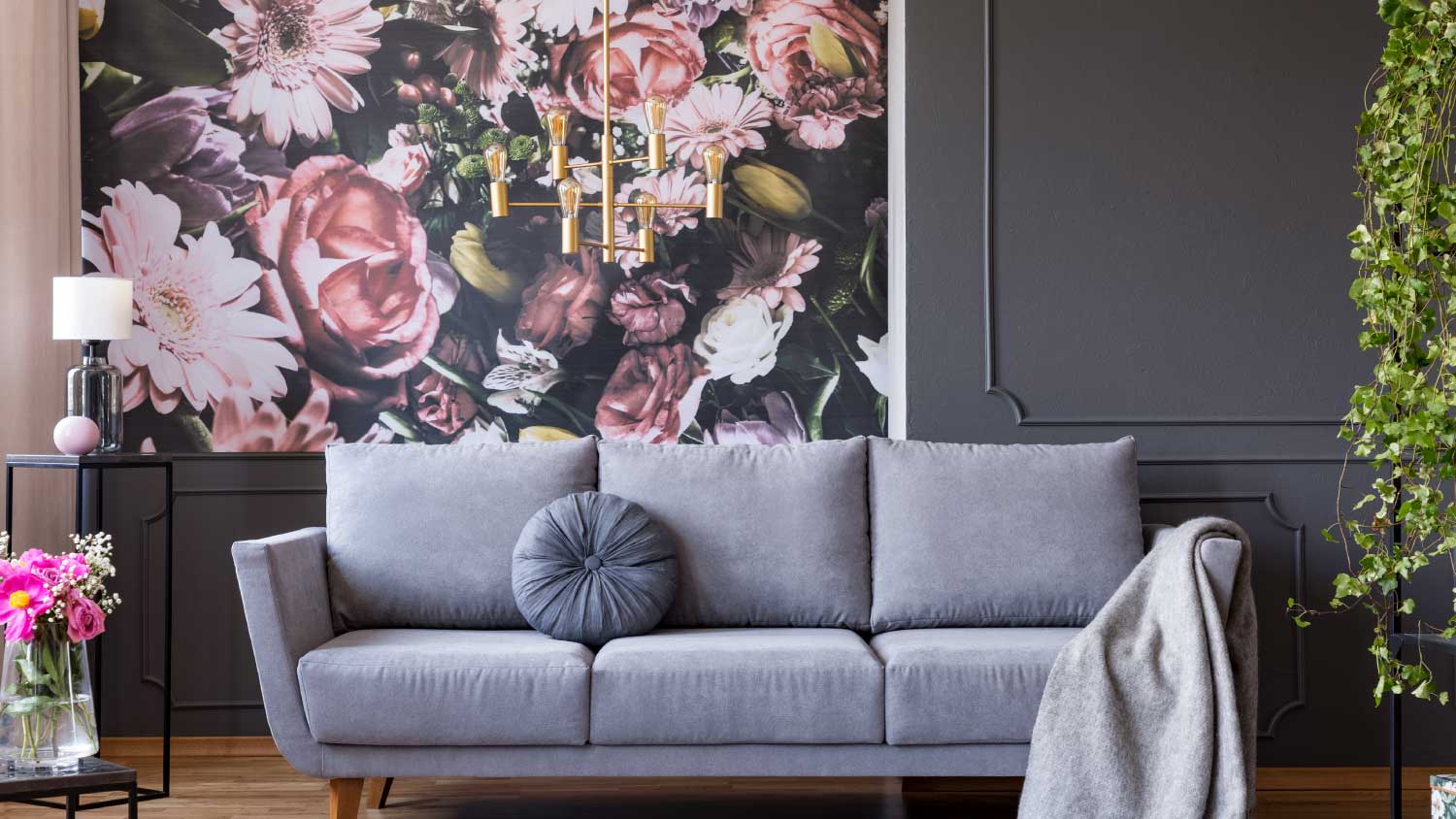
Swirls, florals, and zig-zags all work in maximalist decor, especially in bold and bright palettes. This is a popular bathroom trend in maximalism—the small space wows guests while in use and is easy to shut away from other rooms.
If you’re working from home, developing a theme for a room can provide a bit of escapism. For a music-themed den, a collage of old record albums can create a bold statement wall. Consider creating a design board to help visualize the look and determine the mood of the space.
Don’t be afraid to think out of the box and try something unconventional. For example, you can repurpose an intricately designed rug as a unique headboard. It’s an easy way to add texture and transform the look of your bedroom.

If you already have sofas in the living room, consider adding accent chairs to the mix. Chairs help fill up space in a decorative way and are easy to pull in for extra seating when entertaining guests.

Since maximalist decor can pull the eye in several directions, you’ll want to create a center of interest for each particular room. This “focal point” can be lovely artwork, a dramatic furniture piece, or an architectural feature in the space—anything that catches the eye upon entrance.
Do you travel or enjoy music? Let your space speak for you, showcasing your interests and experiences. You could mount a large guitar as a focal point or adorn your fireplace mantel with various artifacts.


This helps open up a room instead of overwhelming it. For example, consider using the same fabric from the bed or rug for the drapery.
Animal prints make great contrasting accents. With the freedom to mix and match, you can still make the look cohesive. For example, if you have a zebra print rug, add exotic plants and wild cat artwork for a safari theme.

Create a maximalist space where you can wind down and cozy up with a good book. Pillows are the easiest way to amp up the look of your space with comfy interiors. Also, you can use different sizes and textures to create that layered look.
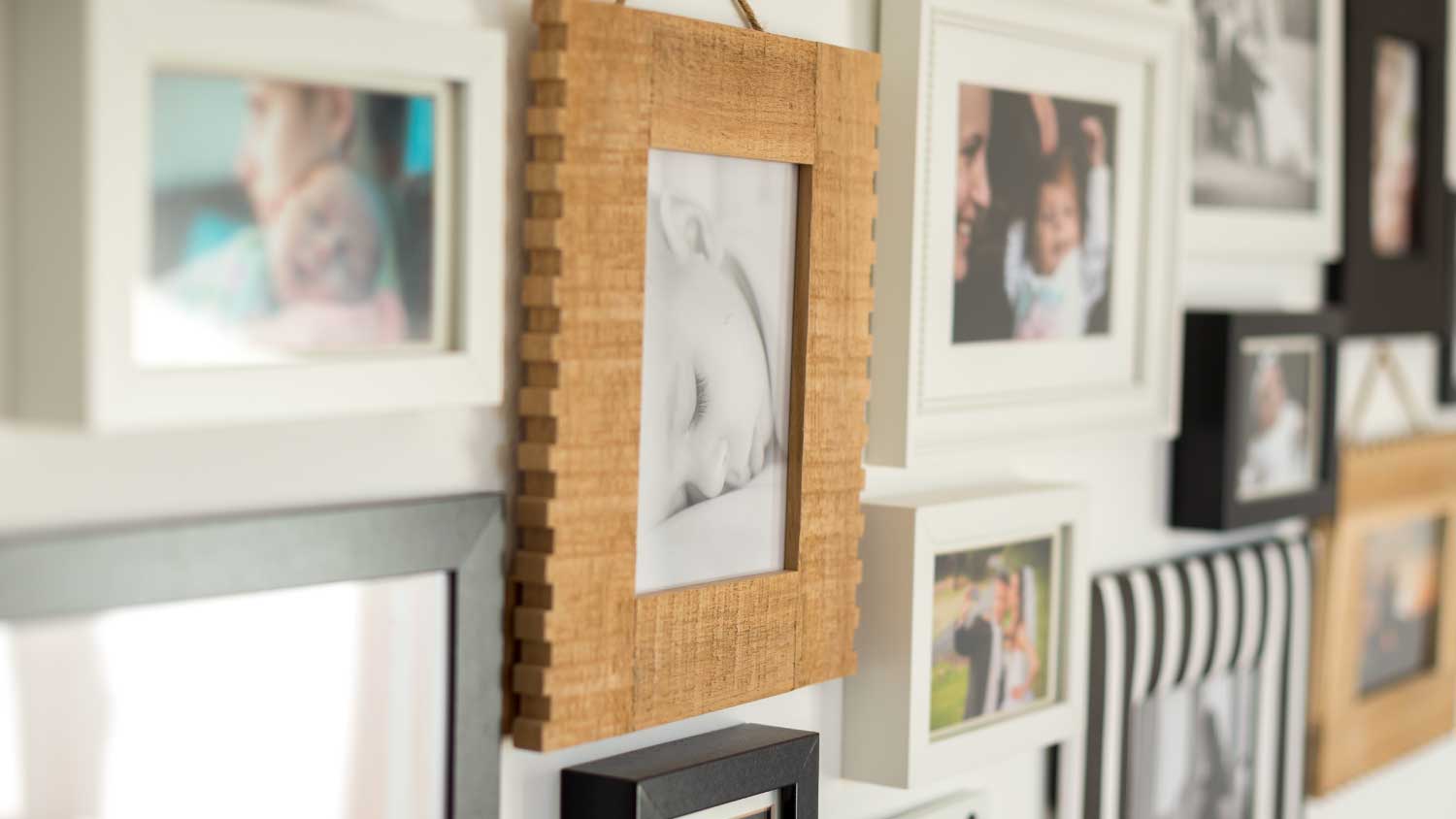
One great aspect of maximalism is that you can strategically fill every square inch of a wall with different-sized artwork. The key is to keep the spacing around all of the frames consistent and use various frame sizes. Doing so will help your gallery look more balanced and eclectic.
Another perk of maximalism is that you can still infuse it with other design styles you love. For example, if you like bohemian styles, you can create a maximalist boho interior by combining the “more is more” philosophy with earthy hues and cozy aesthetics.
Curtains aren’t exclusive to windows, hang them in a doorway to create a unique, elegant entry or on a wall for a cool, textured backdrop perfect for hanging artwork on.

If you’re looking for unique accessories that add that abstract element, a sculpture is the way to go. Whether on a bookshelf, table, or mantel, sculptures can fit anywhere in a room and can add an artistic touch.
Maximalism may feel like a daunting aesthetic to take on, but if there’s one key piece of information to remember about this interior design style, it’s to surround yourself with everything you find beauty in. Turn your space into a collection of all the patterns, textures, artwork and furniture that evoke a feeling of joy within you. Paige Anderson, interior design architect at Nitido Design, says maximalists consider their dwellings to be an expression of their personalities.

Feeling bold enough to take on the task of creating a maximalist space yourself? Follow these design tips to help you get started.
Don’t go overboard: It is possible to overload your space, and there’s a fine line between style and clutter. Contact a local interior decorator to help strike the perfect balance in your maximalist home.
Start small: If you’re on the fence about maximalism and aren’t sure if it’s the look you want to dedicate every room to, pick one room—or even a single wall—to decorate and to get a better idea if it’s a style you want to incorporate throughout your home.
Create a single focal point: If you’re worried about your maximalist room being too much on the eyes, create one main masterpiece in the room. Whether it be a wall with multiple pieces of framed art, a corner filled with plants, or a couch with assorted pillows, build a main attraction that can’t be missed.
Layers are your friend: Possibly the most important tip for this style is to layer your decor. Layering your decor strategically will save space and create an adhesive look out of all the combined pieces, if executed properly. Don’t just layer everything on top of each other, utilize all the surfaces you have in the room to keep the decor spread out and balanced.
Have fun with it: The point of maximalism is to enjoy your space, not be overwhelmed by it. Gather all of your favorite pieces and start planning out how you’ll maximize the space you have available, get creative and start designing your dream maximalist layout.

From average costs to expert advice, get all the answers you need to get your job done.

Find out how much it costs to install crown molding by type and size. Use our expert guide to figure out how much crown molding you need, how much crown molding costs near you, and whether you need to hire a pro.

Discover the average feng shui consultant cost, what impacts pricing, and how to save on your consultation.

Wondering how much it costs to remove an acoustic ceiling? Get cost estimates, key factors, and expert tips to help you plan your ceiling update.

Discover the cost to design a bathroom, including key price factors, to help you plan your remodel with confidence and avoid budget surprises.

Reinvigorate your home with the summer-ready decor trends welcoming us into the sunniest days of 2025. Find your favorite among these top 10.

There are a lot of crown molding materials to choose from, and you’ll need to know the benefits of each to know how to pick the best one for your needs.